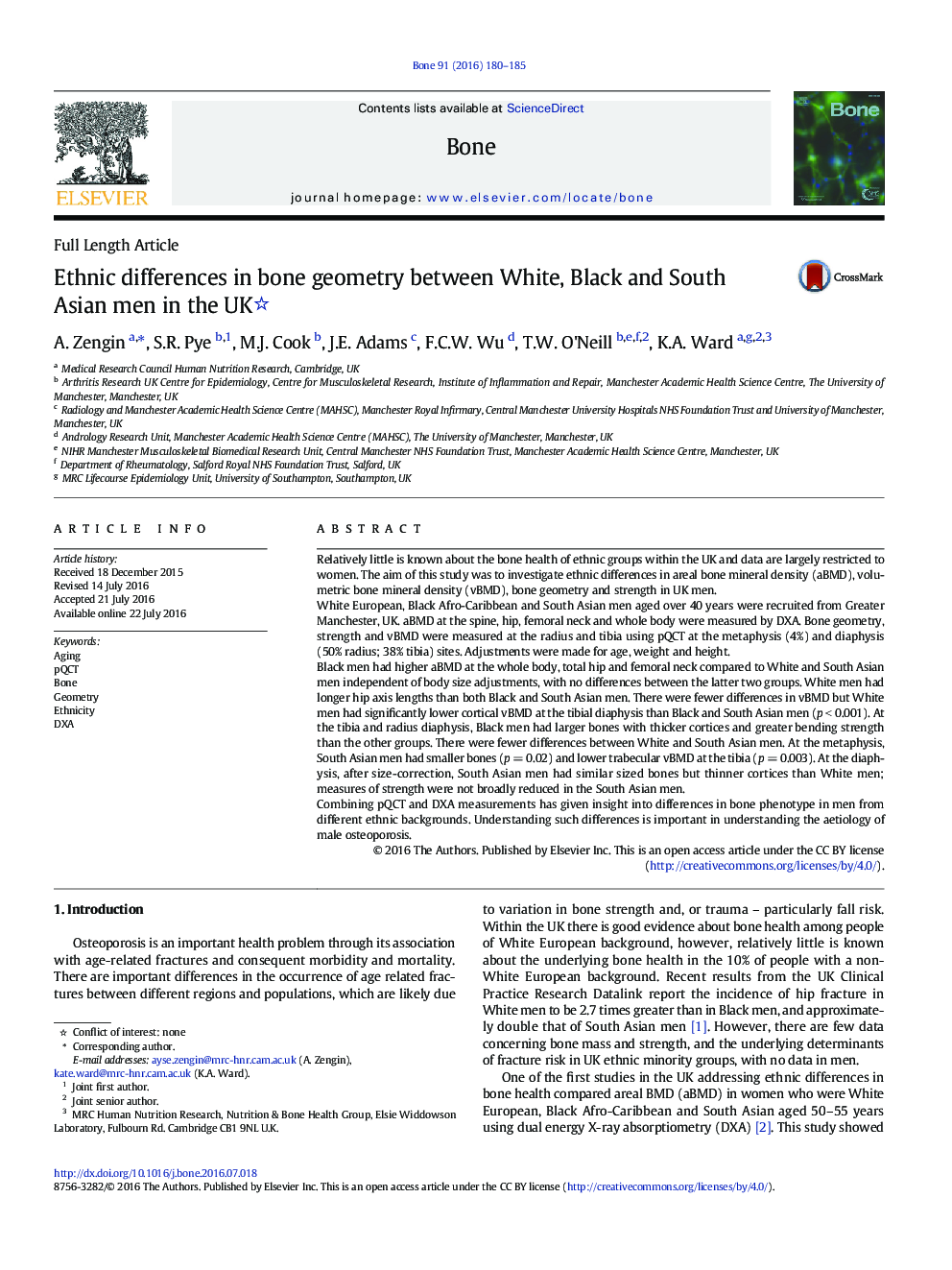| Article ID | Journal | Published Year | Pages | File Type |
|---|---|---|---|---|
| 5888869 | Bone | 2016 | 6 Pages |
â¢Ethnic differences in bone health were investigated in UK men using DXA and pQCTâ¢Areal BMD was highest in Black Afro-Caribbean compared to White and South Asian menâ¢Black Afro-Caribbean men had the most advantageous geometry and bone distributionâ¢No differences in areal BMD between South Asian and White menâ¢At the tibia, South Asians had thinner cortices and lower strength than White men
Relatively little is known about the bone health of ethnic groups within the UK and data are largely restricted to women. The aim of this study was to investigate ethnic differences in areal bone mineral density (aBMD), volumetric bone mineral density (vBMD), bone geometry and strength in UK men.White European, Black Afro-Caribbean and South Asian men aged over 40 years were recruited from Greater Manchester, UK. aBMD at the spine, hip, femoral neck and whole body were measured by DXA. Bone geometry, strength and vBMD were measured at the radius and tibia using pQCT at the metaphysis (4%) and diaphysis (50% radius; 38% tibia) sites. Adjustments were made for age, weight and height.Black men had higher aBMD at the whole body, total hip and femoral neck compared to White and South Asian men independent of body size adjustments, with no differences between the latter two groups. White men had longer hip axis lengths than both Black and South Asian men. There were fewer differences in vBMD but White men had significantly lower cortical vBMD at the tibial diaphysis than Black and South Asian men (p < 0.001). At the tibia and radius diaphysis, Black men had larger bones with thicker cortices and greater bending strength than the other groups. There were fewer differences between White and South Asian men. At the metaphysis, South Asian men had smaller bones (p = 0.02) and lower trabecular vBMD at the tibia (p = 0.003). At the diaphysis, after size-correction, South Asian men had similar sized bones but thinner cortices than White men; measures of strength were not broadly reduced in the South Asian men.Combining pQCT and DXA measurements has given insight into differences in bone phenotype in men from different ethnic backgrounds. Understanding such differences is important in understanding the aetiology of male osteoporosis.
